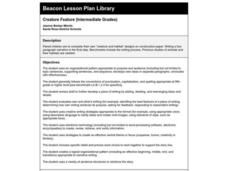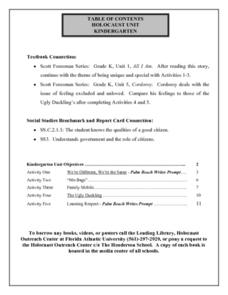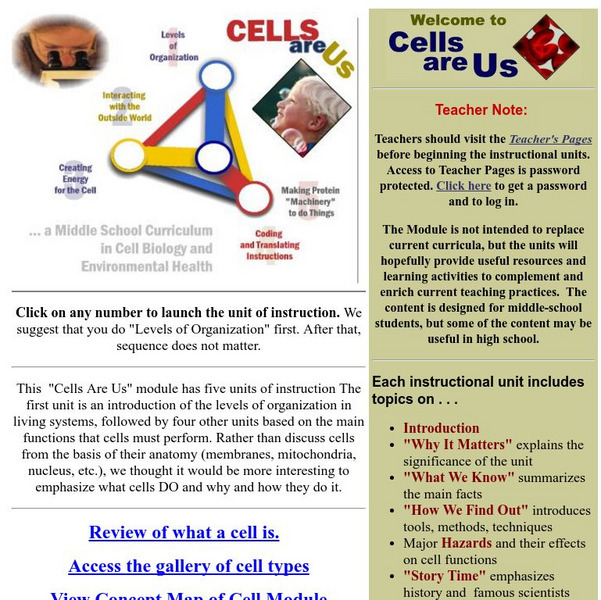Curated OER
Oh, Let the Rain Fall Down
Fifth graders explain the three phases of the water cycle in a narraive paragraph where they describe the journey of a single raindrop. They are introduced to five science vocabulary words and personfication.
Curated OER
Creature Feature
Students work in pairs to create a creature and its habitat out of construction paper. Then students write a narrative to describe the animal and its habitat.
Curated OER
Experiencing Japanese Feudalism
Young scholars identify that a system of feudalism similar to that of medieval Europe developed in Japan by 1300. Students identify the social hierarchy of feudal Japan. Young scholars identify what the cultural basis for the...
Curated OER
Operation Anitbody
Students identify the types of cells that are important in the immune system. They investigate the different mechanisms used by white blood cells as they protect the body from foreign invaders. Students are given five case studies,...
Curated OER
Kansas Crops: From Seeds to Food
First graders explore U.S. geography by researching food production. In this agriculture instructional activity, 1st graders identify the process of crops from a seed to a plate and discuss the importance of farmers in the production of...
Curated OER
Narrative Writing
Young scholars complete activities to learn narrative writing. In this narrative writing lesson students are given writing prompts in order to better understand how to write in a narrative format.
Curated OER
Exploring Satire - Jonathan Swift
Young scholars study about satire and find examples Part One of GULLIVER'S TRAVELS. They then write an essay about the examples they found and how the writer used satire in his literary work.
Curated OER
Math: Perimeter, Area, and Volume
Eighth graders discover how to compute the perimeter, area, and volume of different objects. With partners, they find and calculate the perimeter , area, and volume of 10 items each and exchange information. Students compile their...
Curated OER
Alice's Adventures in Wonderland and Through the Looking-Glass Questions
In this reading comprehension worksheet, students respond to 9 short answer and essay questions based on Lewis Carroll's Alice’s Adventures Through the Looking Glass.
Curated OER
The Little Red Hen
Students review the of "The Little Red Hen," to make sure that they comprehend that the hen's three friends were the cat, the dog, and the goose. They experiment with character vocies. Students are asked how the gossipy goose would...
Curated OER
Human Rights & Equal Opportunity Commission
Pupils consider what human rights are. They comprehend the origins of modern human rights. Students appreciate the meaning and significance of the Universal Declaration of Human Rights. They appreciate the relationship between rights...
Curated OER
Flower Power
Students use video learning to explore how flowers make seeds and dissect their own flower, and make a flower with its reproductive parts out of construction paper.
Curated OER
Weather and Seasons
Students look through pictures to examine the seasons and seasonal activities which include the Salish months and traditional activities for each month. They also discover why certain activities are done at the same time each year and...
Curated OER
Escape to Freedom
Students read 'They Called Her Moses," create a wanted poster for Tub man, compose a journal entry imagining they are William Still, and in groups, create a newspaper depicting the incident of the runaway slaves and events from the time...
Curated OER
Kindergarten Holocaust Unit
Students determine that we are the same. They discuss that we have differences and realize our differences make us special. They recall the ways in which human beings and Sesame Street characters are alike. They create a second...
ReadWriteThink
Read Write Think: Planning Story Characters Using Interactive Trading Cards
Students use trading cards to examine fictional characters in a story.
Texas A&M University
Peer Curricula: Cells Are Us
Find five instructional units on cells: levels of organization, interacting with the outside world, creating energy for the cell, coding and translating instructions, and making protein "machinery" to do things. Each unit is broken down...


















